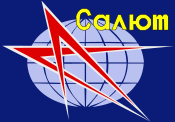| Names | Soyuz 18a, Soyuz 18-1, April 5th Anomaly |
|---|---|
| Mission type | Docking with Salyut 4 |
| Operator | Soviet space program |
| Mission duration | 21 minutes 27 seconds 60 days (planned) |
| Orbits completed | Failed to orbit |
| Apogee | 192.0 km (sub-orbital spaceflight) |
| Spacecraft properties | |
| Spacecraft | Soyuz 7K-T No.6 |
| Spacecraft type | Soyuz 7K-T |
| Manufacturer | OKB-1 |
| Launch mass | 6830 kg |
| Landing mass | 1200 kg |
| Crew | |
| Crew size | 2 |
| Members | Vasily Lazarev Oleg Makarov |
| Callsign | Урал (Ural – "Ural") |
| Start of mission | |
| Launch date | 5 April 1975, 11:04:54 UTC |
| Rocket | Soyuz |
| Launch site | Baikonur, Site 1/5[1] |
| End of mission | |
| Landing date | 5 April 1975, 11:26:21 UTC |
| Landing site | Altai Mountains, Kazakhstan (official) 50°50′N 83°25′E / 50.833°N 83.417°E |
| Orbital parameters | |
| Reference system | Geocentric orbit (planned) |
| Regime | Low Earth orbit |
| Altitude | 192.0 km |
| Inclination | 51.6° |
| Period | 90.0 minutes |
| Docking with Salyut 4 (planned) | |
 Salyut program insignia | |
Soyuz 7K-T No.39 (also named Soyuz 18a or Soyuz 18-1 by some sources and also known as the April 5 Anomaly)[2]: 192–3 was an unsuccessful launch of a crewed Soyuz spacecraft by the Soviet Union in 1975. The mission was expected to dock with the orbiting Salyut 4 space station, but due to a failure of the Soyuz launch vehicle the crew failed to make orbit. The crew consisted of commander Vasily Lazarev, and flight engineer Oleg Makarov, a civilian. Although the mission was aborted and did not accomplish its objective, the craft exceeded common space boundaries and therefore is recognized as a sub-orbital spaceflight, which the crew survived. The crew, who initially feared they had landed in China, were successfully recovered.[3][4]
The accident was partly disclosed by the normally secretive Soviets as it occurred during preparations for their joint Apollo-Soyuz Test Project with the United States which flew three months later. Lazarev never flew to space again and never fully recovered from the accident; Makarov made two more flights on board a Soyuz (both of which were to the Salyut 6 space station).
- ^ Mark Wade. "Baikonur LC1". Encyclopedia Astronautica. Archived from the original on 28 August 2016. Retrieved 11 October 2018.
- ^ Cite error: The named reference
hallwas invoked but never defined (see the help page). - ^ Newkirk, Dennis (1990). Almanac of Soviet Manned Space Flight. Houston, Texas: Gulf Publishing Company. ISBN 0-87201-848-2.
- ^ Clark, Phillip (1988). The Soviet Manned Space Program. New York: Orion Books, a division of Crown Publishers, Inc. ISBN 0-517-56954-X.